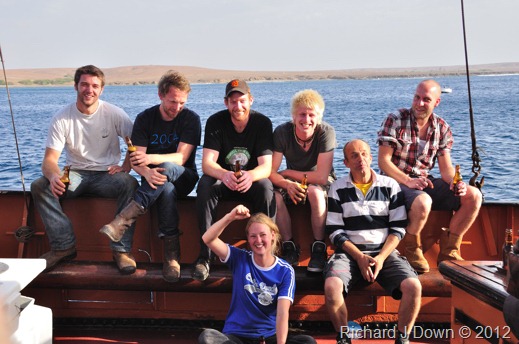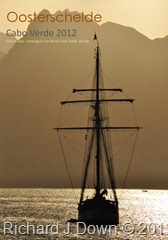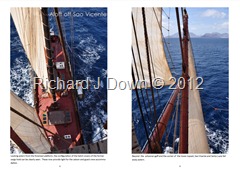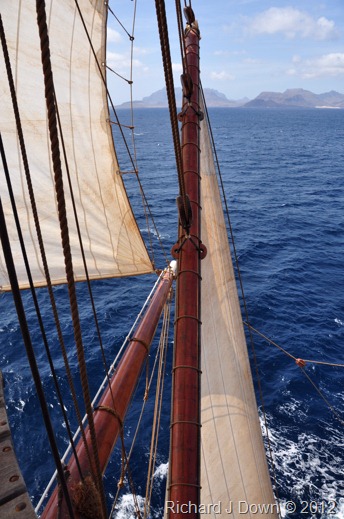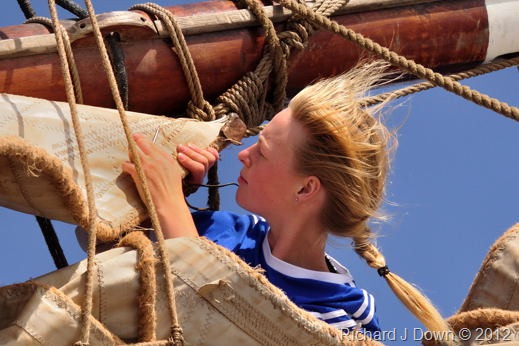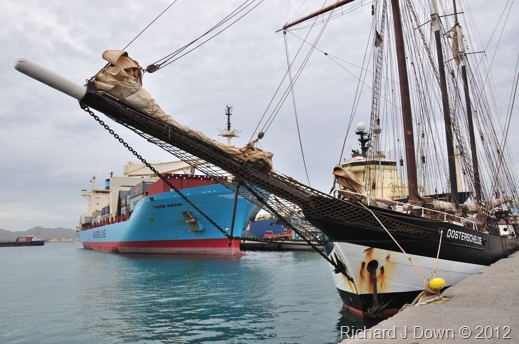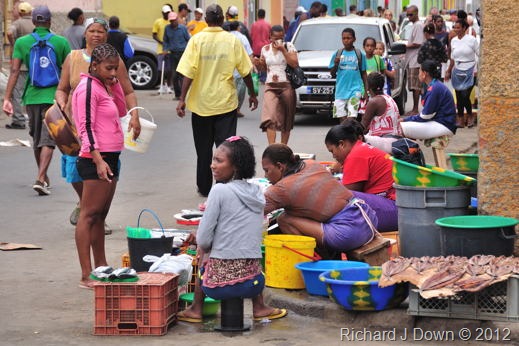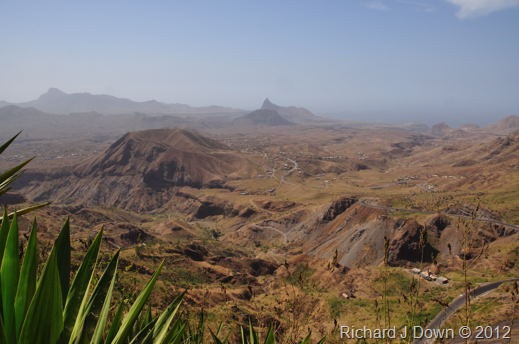I am pleased that my tutor liked this assignment:
“This, your final assignment, is a good choice of subject, lots of interesting shapes, plenty of activity and picturesque settings.”
He also gave me feedback on individual images. I will attempt to respond to his critique and maybe explain my thoughts behind choosing the images I did and where possible, offer alternate or edited images that can be included in my submission for assessment in July.
Cover Illustration – Tutor made the point that this looked like an end rather than a beginning being a sunset. As a first impression this may be correct and I can understand that point of view. However I chose it because of its impact and its simple graphic shapes and colours. As a cover illustration it grabs the attention. I don’t think its position in the story matters at this stage. Ideally I would have used an image of the schooner in full sail but sadly, sea conditions meant this was not possible. (as noted earlier) An editor would no doubt have obtained such an image from a stock library.
Picture 3 – “This one is a bit of a jumble. Perhaps if you had been further back, (can be a problem I know in a confined space) or used a wider angle lens, you could have played around a bit with the composition. Don’t know what to look at really. Part of the problem is that they appear to be looking at something outside the frame, a bit like a football photo without the ball in it if you see what I mean”
To be honest, I couldn’t see a problem with this one. To see what they are looking at just follow the diagonals of the ropes they are holding. Although the pin rail disappears out of the frame, you can infer it from its’ line. What they are doing is “sweating” the ropes i.e. making them as tight as possible before belaying them on the rail. Here is an alternative but I feel it would lead to too many truncated limbs if I cropped it. I’ll play with it to see if I can make it work.
*4th March – I did a bit of work on this print and will submit the result in response to feedback.
 | 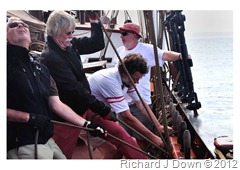 * * |
Picture 5. – “ Technically it is fine, good exposure etc. The problem for me is that again they are looking at something but the viewer doesn’t know what, it doesn’t help that they are too near the edge of the frame they are looking at. There should be more space between the direction of their view and the frame edge than behind them.”
Point taken. This was already cropped down from a landscape wide angle shot of the wheelhouse. What I have tried to do is to place it on the right of the double page spread so that the figures are looking across to the view of the sails as they would be in front of them. (see page mock up in the previous post). I wanted to match the late afternoon light as both images were made within minutes of each other. Here are two alternative images I will choose one to submit in response to feedback:
 |  * * |
Following eye lines can be problematic in these situations. Subjects are quite often scanning the horizon just “looking out” (it’s part of the job) or watching the results of their efforts hauling on a rope thirty or forty feet above their heads which is impossible to get into shot.
Picture10. - I like the circle and the lines and the viewpoint and the colours. I wouldn’t have chopped his left hand off at the top.
I’m afraid amputation is a risk of spontaneity! This was a grab shot made on the spur of the moment as the captain demonstrated the running rigging. My eye was on what his right had was doing. his left was merely steadying him as he drew. This is the only alternative shot of the scene and it loses a lot of what the tutor liked:

Reflection on Assignment 5: Of all of the assignments for this course, I have enjoyed this one the most. I spent two weeks doing two of the three things I enjoy most, photography and sailing. (I also made some movie clips but that’s my next course). As with the exercise I did at the carnival, the most difficult part was selecting the images to include. I am definitely being more selective and have learned to cull images and work with fewer ideas and make sure that the ones I present are as good as I can make them. I hope I did that when I abandoned my attempt to include too much into this photo narrative. From my tutor’s feedback I need to be a little more careful with my composition and try to plan more carefully. In this particular situation I was not always sure what would happen next. I tended to photograph everything that happened when I wasn’t required to partake and constructed a narrative from what I got. I’m not sure this would work if my involvement on the voyage was limited to a day or two.
Reflection on The Art of Photography Course: There is no doubt that I have learned a lot from this course as I expected that I would. I have a better knowledge of how to use my digital SLR, mainly because I have used it so much in such a short space of time. I now look for shapes and lines when framing my images and I am more aware of the use of colour in composition. I hope that I am able to interpret what is required from a brief although I am still aware of my somewhat conservative attitude towards photography.
I hope that by studying Digital Film Production Creative Concepts I may be able to loosen up a bit by experimenting with a medium in which I don’t have years of bad habits to unlearn. I’ll put my DSLR away for a while and embrace something new that will enable me to be creative in a different way.
Richard Down 29th February 2012



